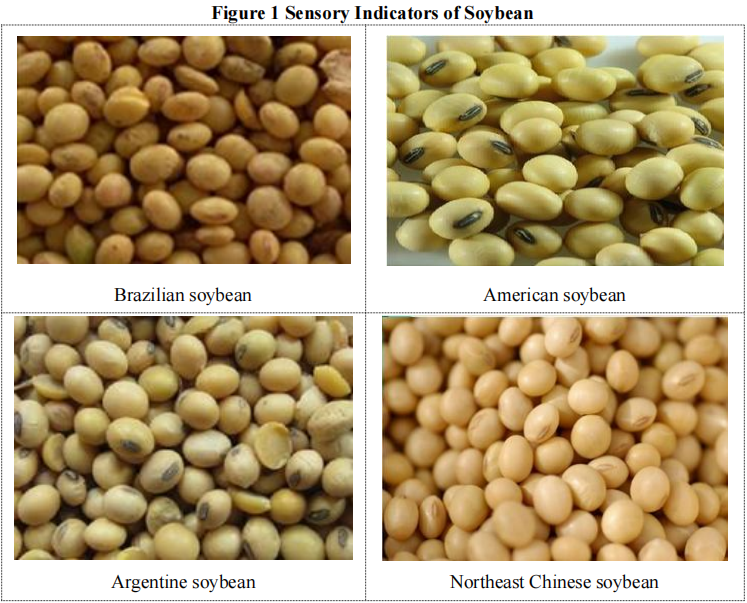Analysis of Raw Materials | Nutritional Property of Soybean and Soybean Meal from Different Origins
- Christy

- Sep 19, 2023
- 3 min read
Background
According to the soybean supply and demand data released by the National Bureau of Statistics in 2022, China’s soybean demand stands at 115.29 million tonnes, while domestically grown soybeans amounted to 20.29 million tonnes. The total amount of imported soybeans reached 91.08 million tonnes, with Brazil ranking first by importing 54.4 million tonnes and accounting for about 60% of the import proportion. The United States, in second place, imported 29.53 million tonnes, accounting for about 32% of the import proportion. Argentina ranked third, importing 3.65 million tonnes, accounting for approximately 4% of the import share.
Content
In order to diminish our reliance on imported soybeans, it is imperative that we gain a thorough comprehension of the nutritional characteristics of soybean and soybean meal from diverse sources. This knowledge will proficiently enhance the utilization of feed protein, thereby assuring the production performance and efficacy of farmed animals.
In this issue, we analyse the nutritional properties of soybeans and soybean meal in the main producing areas to provide a reference for the rational application of soybean raw materials in feed.
Soybean from Different Origins
1.Sensory Indicators
The perception of soybean, including colour and taste, varies depending on the origins, species, and climate among other factors.
Brazilian soybean:The colour of the soybean is light red with noticeable red spots. Additionally, the meal is dark, has a slight red tint, and possesses a subpar flavour.
American soybean:The colour is lighter, thus resulting in a lighter soybean meal which have a better taste.
Argentine soybean:The colour is lighter and of a lower grade. The soybean meal is also lighter, resulting in an improved taste.
Chinese soybean:The colour is lighter and of a lower grade. The soybean meal is also lighter, resulting in an improved taste.

2.Nutritional Indicators
Comparison of imported and Chinese soybeans: Soybean varieties from different origins have distinct breeding directions. The soybean breeding directions of the three key imports are primarily to boost oil content and produce meal as a by-product. Consequently, the fat and protein contents of imported and Chinese soybeans differ.
Imported soybean: Low in crude protein and high in fat, causing it to stick to teeth when biting it. However, this does not necessarily indicate high moisture content, as it could be due to a higher fat content.
Chinese soybean:High in crude protein and low in fat.

Soybean Meal from Different Origins
The nutritional properties of peeled soybean meal are influenced by both raw materials and processing techniques. In this study, we examine the nutritional properties of soybean meal derived from various origins.
1.Nutritional Indicators
Brazilian soybean meal:It contains elevated levels of crude protein and crude fat, alongside high crude fiber and raffinose content.
American soybean meal:The crude fibre content is low, while sugar and stachyose contents are high.
Argentine soybean meal:Low protein levels and moderate amount of other indicators.
Chinese soybean meal:High net energy for swine, low levels of crude fat and ash, and low quantities of suagr, stachyose, and raffinose.

2.Indicators of Amino Acids
Comparison between imported and Chinese soybean meal: The Lys and Thr levels in soybean meal from Argentina, Brazil and the United States are lower than those found in China. However, DL-Met and Trp levels are higher in imported soybean meal compared to the Chinese soybean meal.

3.Indicators of Minerals
Brazilian soybean meal:The Mg, Zn and Fe contents surpass those found in other origins.
American soybean meal:The contents of Ca, P and Zn are higher than those from other origins.
Argentine soybean meal:The contents of Mn are higher than those from other origins.
Chinese soybean meal:The Ca, P and K contents surpass those found in other origins.

PS:The nutritional data for soybean meal in Argentina and Brazil are derived from 1944 samples across 18 papers published from 2002 to 2018 and M. Meanwhile,2020.The soybean meal data for China was sourced from the 2020 Nutrient Requirements of Swine.And the oligosaccharide data for China’s soybean meal was obtained from China Agricultural University in 2020.








Comments